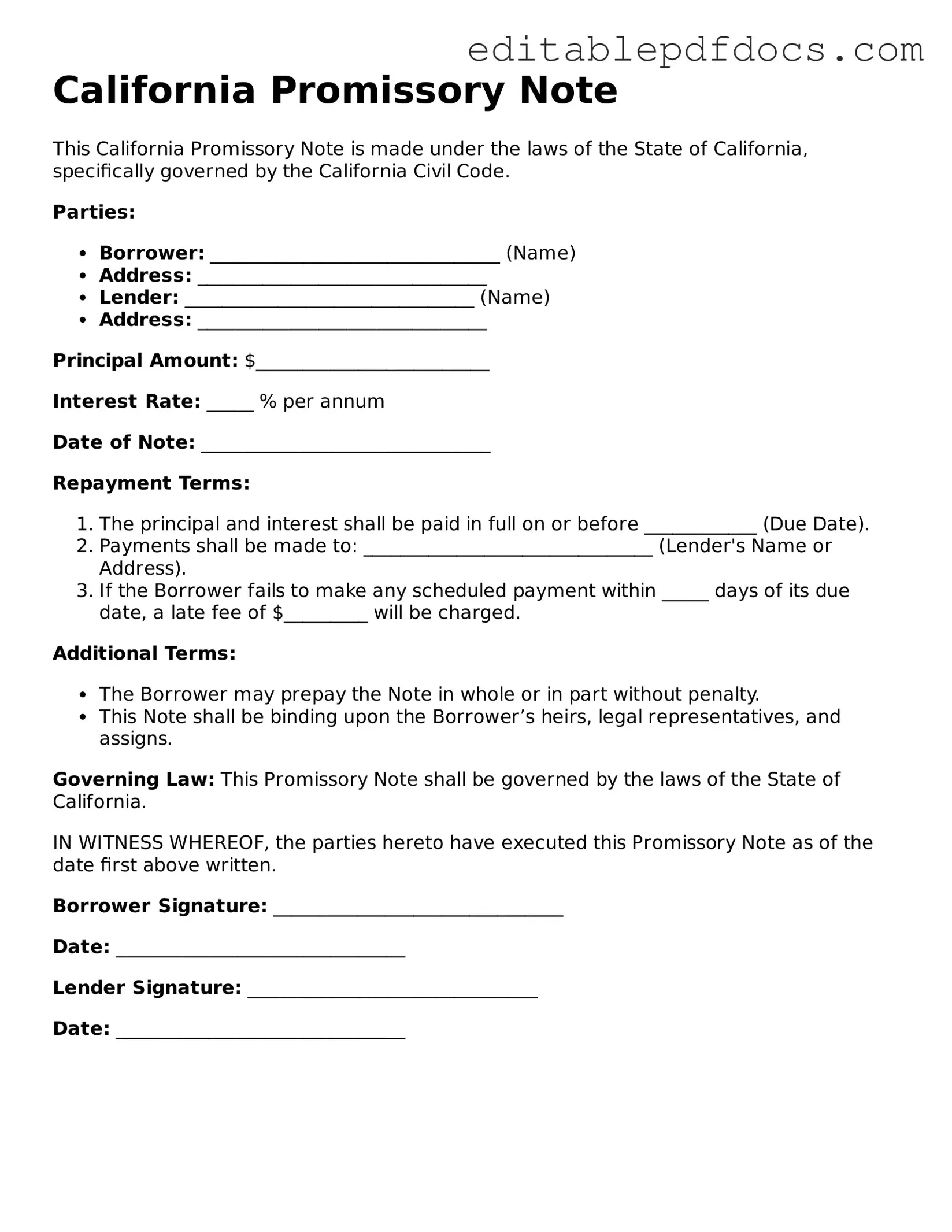Promissory Note Document for California
A California Promissory Note is a written promise to pay a specified amount of money to a designated party at a future date or on demand. This document outlines the terms of the loan, including interest rates and repayment schedules, ensuring both parties understand their obligations. For those looking to formalize a loan agreement, filling out the form is essential—click the button below to get started.
Open Editor Now
